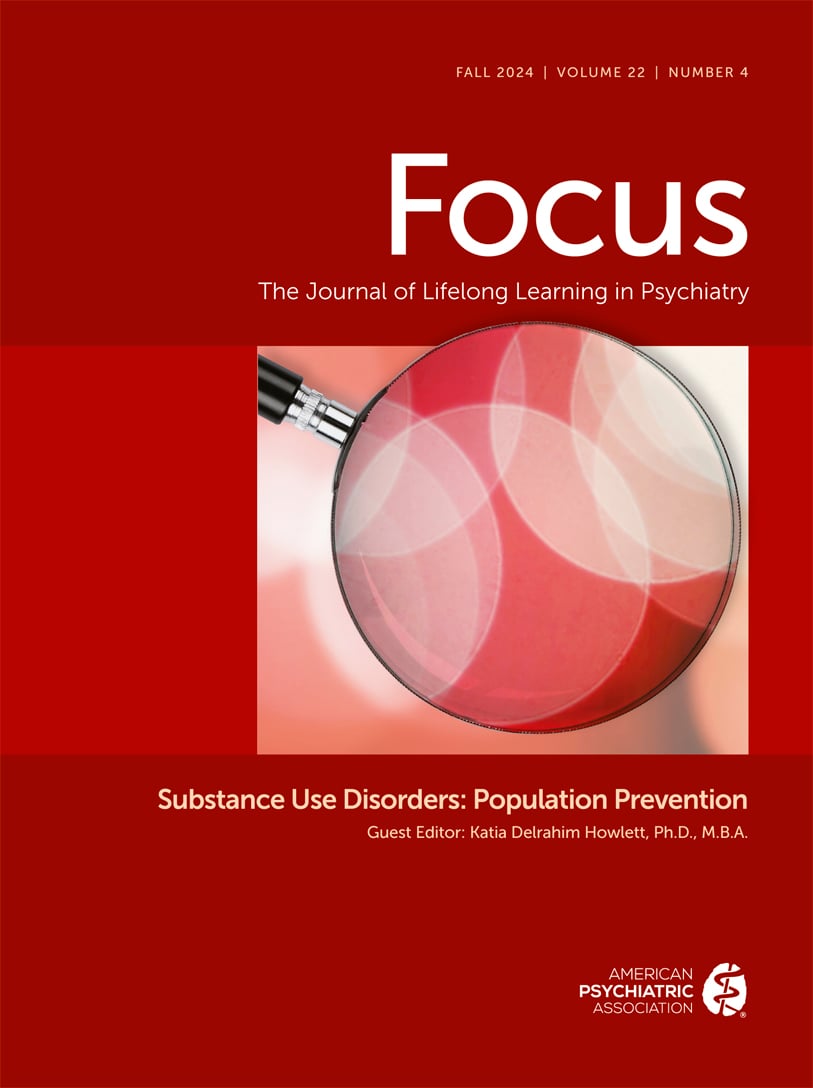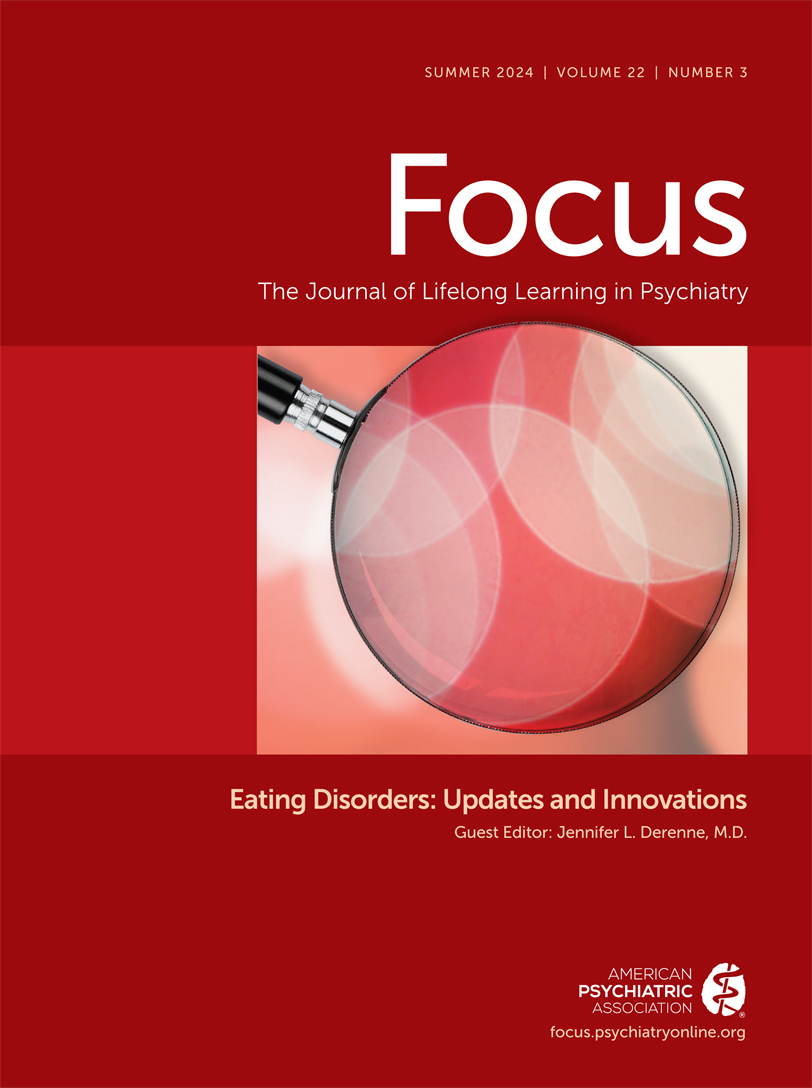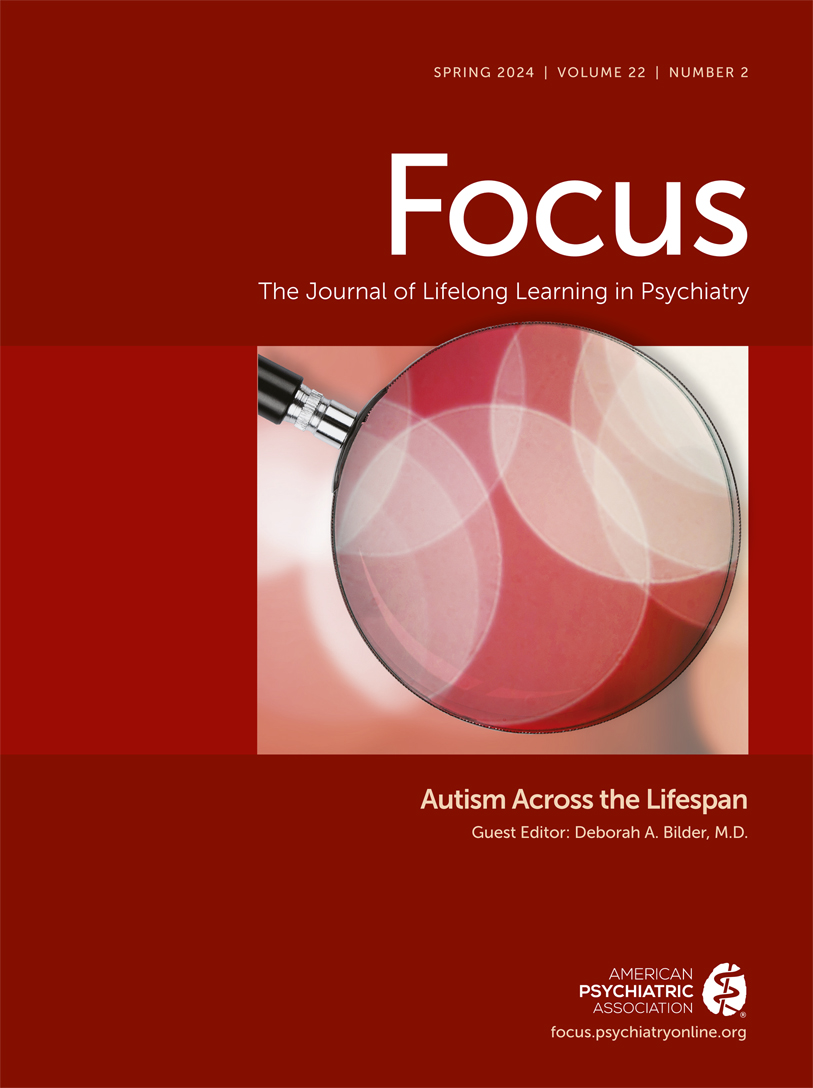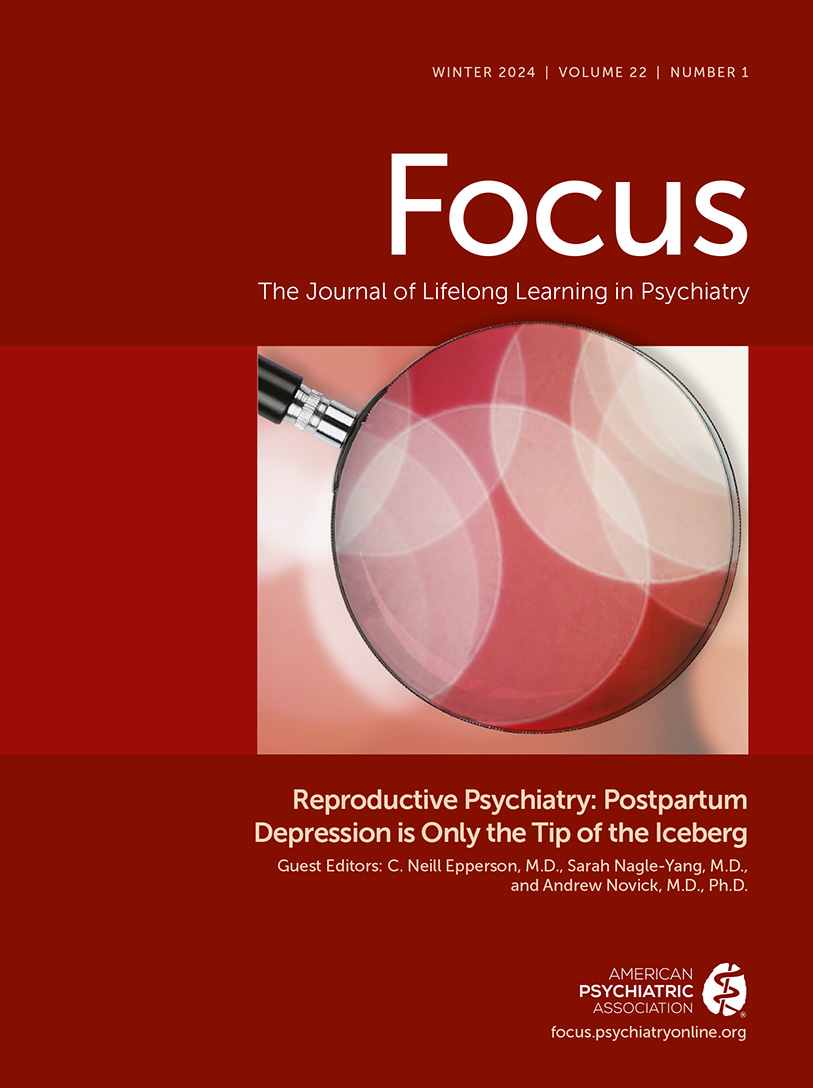Focus
- Volume 20
- Number 1
- January 2022
From the Guest Editor
Reviews
Publication date: 01 January 2022
Pages3–7Vagus nerve stimulation (VNS) is a form of neuromodulation that stimulates the vagus nerve. VNS had been suggested as an intervention in the late 1800s and was rediscovered in the late 1980s as a promising treatment for refractory epilepsy. Since then, ...
https://doi.org/10.1176/appi.focus.20210023Publication date: 01 January 2022
Pages8–18Transcranial magnetic stimulation (TMS) is an increasingly popular noninvasive brain stimulation modality. In TMS, a pulsed magnetic field is used to noninvasively stimulate a targeted brain region. Repeated stimulation produces lasting changes in brain ...
https://doi.org/10.1176/appi.focus.20210021Publication date: 01 January 2022
Pages19–31Transcranial electrical stimulation (tES) comprises noninvasive neuromodulation techniques that deliver low-amplitude electrical currents to targeted brain regions with the goal of modifying neural activities. Expanding evidence from the past decade, ...
https://doi.org/10.1176/appi.focus.20210020Publication date: 01 January 2022
Pages32–35Focused ultrasound is a novel brain stimulation modality that combines the noninvasiveness of repetitive transcranial magnetic stimulation and the precision of deep brain stimulation. In this review, the authors examine low-intensity focused ultrasound ...
https://doi.org/10.1176/appi.focus.20210022Publication date: 01 January 2022
Pages36–44Safe, noninvasive, and effective treatments for brain conditions are everyone’s dream. Low-level light therapy (LLLT) based on the photobiomodulation (PBM) phenomenon has recently been adopted in practice, with solid scientific evidence. Optogenetics ...
https://doi.org/10.1176/appi.focus.20210025Publication date: 01 January 2022
Pages45–54An ever-growing population experiences a wide range of psychopathologies, and there is now more than ever a need for clear differential diagnoses between disorders. Furthering this need is the fact that many psychological, psychiatric, and neurological ...
https://doi.org/10.1176/appi.focus.20210024Clinical Synthesis
Publication date: 01 January 2022
Pages55–63In deep brain stimulation (DBS), a neurostimulation device is implanted to generate electrical fields in targeted deep brain regions in order to affect circuits associated with neuropsychiatric illness for potential therapeutic benefit. The development of ...
https://doi.org/10.1176/appi.focus.20210029Publication date: 01 January 2022
Pages64–70In the past, psychotherapy and neuropharmacological approaches have been the most common treatments for disordered thoughts, moods, and behaviors. One new path of brain therapeutics is in the deployment of noninvasive approaches designed to reprogram ...
https://doi.org/10.1176/appi.focus.20210028Ethics Commentary
Influential Publications
Publication date: 01 January 2022
Pages80–89Background: Electrical stimulation of the auricular branch of the vagus nerve (ABVN) via transcutaneous auricular vagus nerve stimulation (taVNS) may influence afferent vagal networks. There have been 5 prior taVNS/fMRI studies, with inconsistent ...
https://doi.org/10.1176/appi.focus.20110Publication date: 01 January 2022
Pages90–99Background: Transcranial focused ultrasound (tFUS) is a noninvasive brain stimulation method that may modulate deep brain structures. This study investigates whether sonication of the right anterior thalamus would modulate thermal pain thresholds in ...
https://doi.org/10.1176/appi.focus.20109Publication date: 01 January 2022
Pages100–116Rationale: Delivery of therapeutic agents to the brain is limited by the presence of the blood-brain barrier (BBB). An emerging strategy to temporarily and locally increase the permeability of the BBB is the use of transcranial focused ultrasound (FUS) ...
https://doi.org/10.1176/appi.focus.20104Review of Current Strategies for Delivering Alzheimer's Disease Drugs Across the Blood-Brain Barrier
Publication date: 01 January 2022
Pages117–136Effective therapy for Alzheimer's disease is a major challenge in the pharmaceutical sciences. There are six FDA approved drugs (e.g., donepezil, memantine) that show some effectiveness; however, they only relieve symptoms. Two factors hamper research. ...
https://doi.org/10.1176/appi.focus.20106Publication date: 01 January 2022
Pages137–151Mental disorders are a leading cause of disability, morbidity, and mortality among civilian and military populations. Most available treatments have limited efficacy, particularly in disorders where symptoms vary over relatively short time scales. ...
https://doi.org/10.1176/appi.focus.20102Publication date: 01 January 2022
Pages152–159Objective: Obsessive-compulsive disorder (OCD) is a chronic and disabling condition that often responds unsatisfactorily to pharmacological and psychological treatments. Converging evidence suggests a dysfunction of the cortical-striatal-thalamic-...
https://doi.org/10.1176/appi.focus.20103Publication date: 01 January 2022
Pages160–169Background: Deep brain stimulation (DBS) is an emerging treatment for severe obsessive-compulsive disorder (OCD). We compared the efficacy of ventral capsule/ventral striatal (VC/VS) and anteromedial subthalamic nucleus (amSTN) DBS in the same patients ...
https://doi.org/10.1176/appi.focus.20105Past Issues
View Issues Archive
Vol. 22 | No. 4

Vol. 22 | No. 3

Vol. 22 | No. 2
